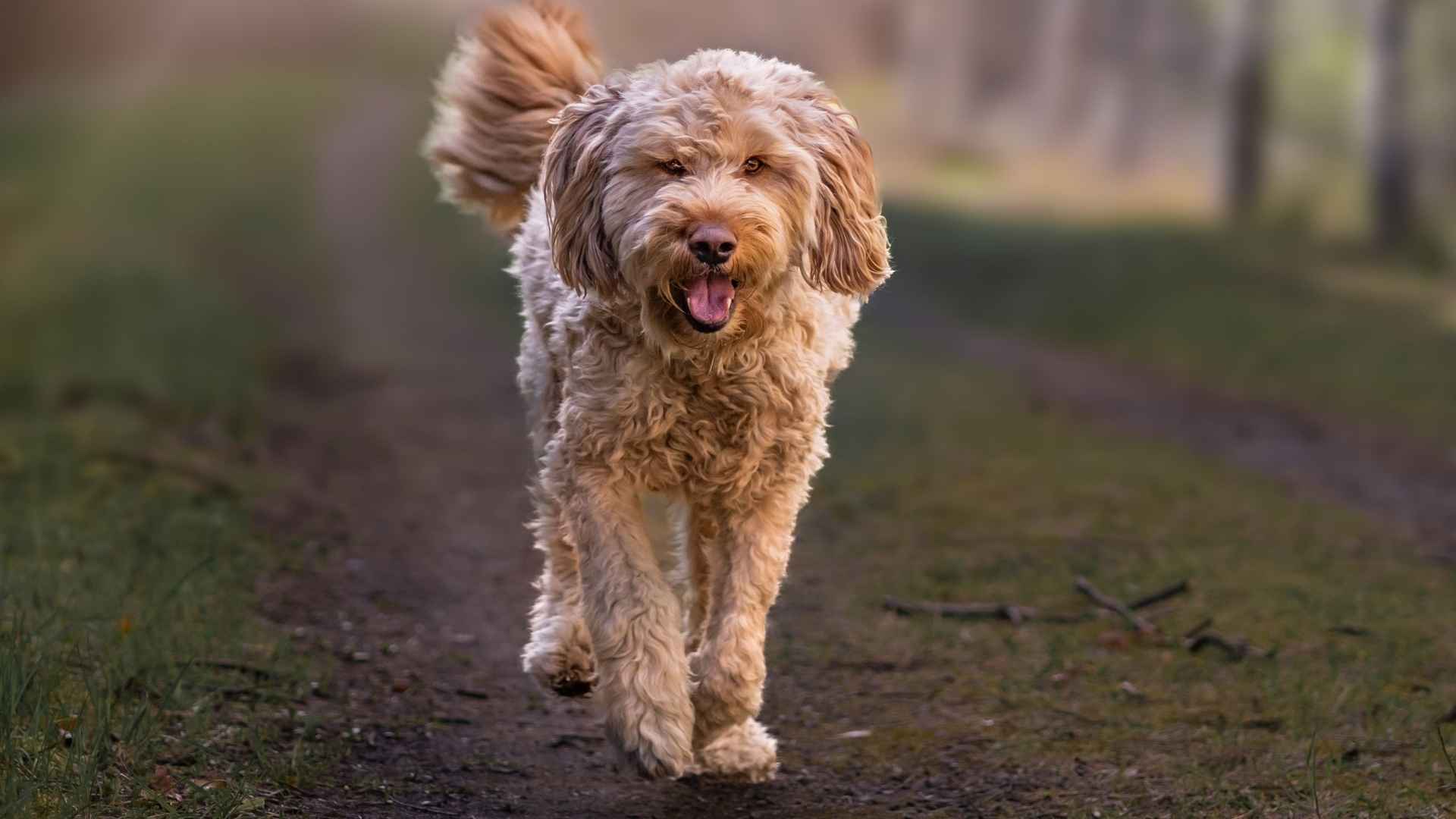There are over 340 recognized dog breeds around the world, yet most people only know a handful—Labrador, German Shepherd, Golden Retriever. What about the others? Many unique breeds go unnoticed, even though they have just as much personality, charm, and history.
Some are ancient hunters with rare markings. Others are tiny companions with roots in royalty. Their stories are often unknown, and their faces are unfamiliar. But what they offer is just as rich: loyalty, intelligence, and a chance to stand out.
While the world celebrates popular breeds, there’s a whole hidden world of dogs worth knowing. These aren’t dogs you’ll see in every park—but they’re the ones that make people ask, “What breed is that?”
If you’ve ever wanted a dog as special as your lifestyle, or simply want to discover something different, this list is for you. The article uncovers dog breeds that are beautiful, rare, and deeply loved, just not often seen.
Lesser-Known Dog Breeds
1. Chinook
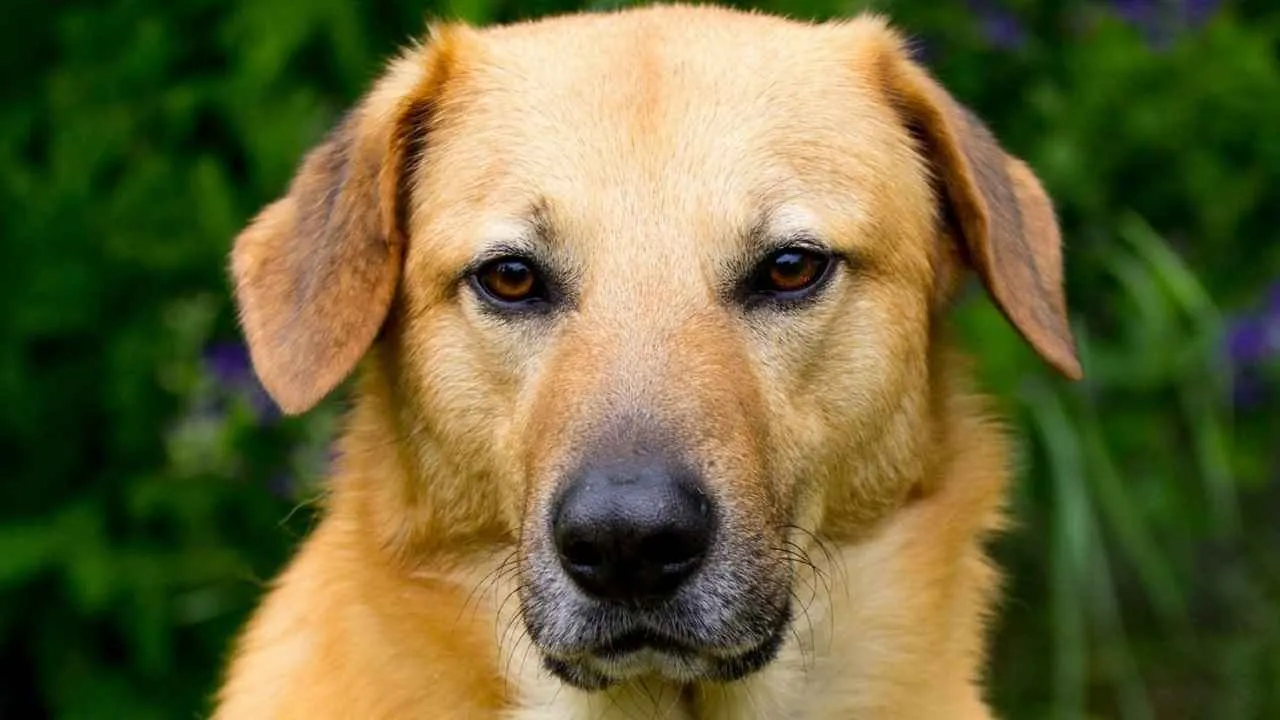
The Chinook was created in New Hampshire in the early 1900s for hauling loads across snowy terrain. It combines the strength of freight dogs with steady movement. Their strong build and balanced proportions reflect their original purpose as a dependable working breed.
Temperament Rooted in Patience
They are calm, responsive, and naturally attentive without being overly alert or shy. Chinooks tend to follow voice tone and routine rather than sharp commands. This quiet nature makes them dependable in both structured and casual environments.
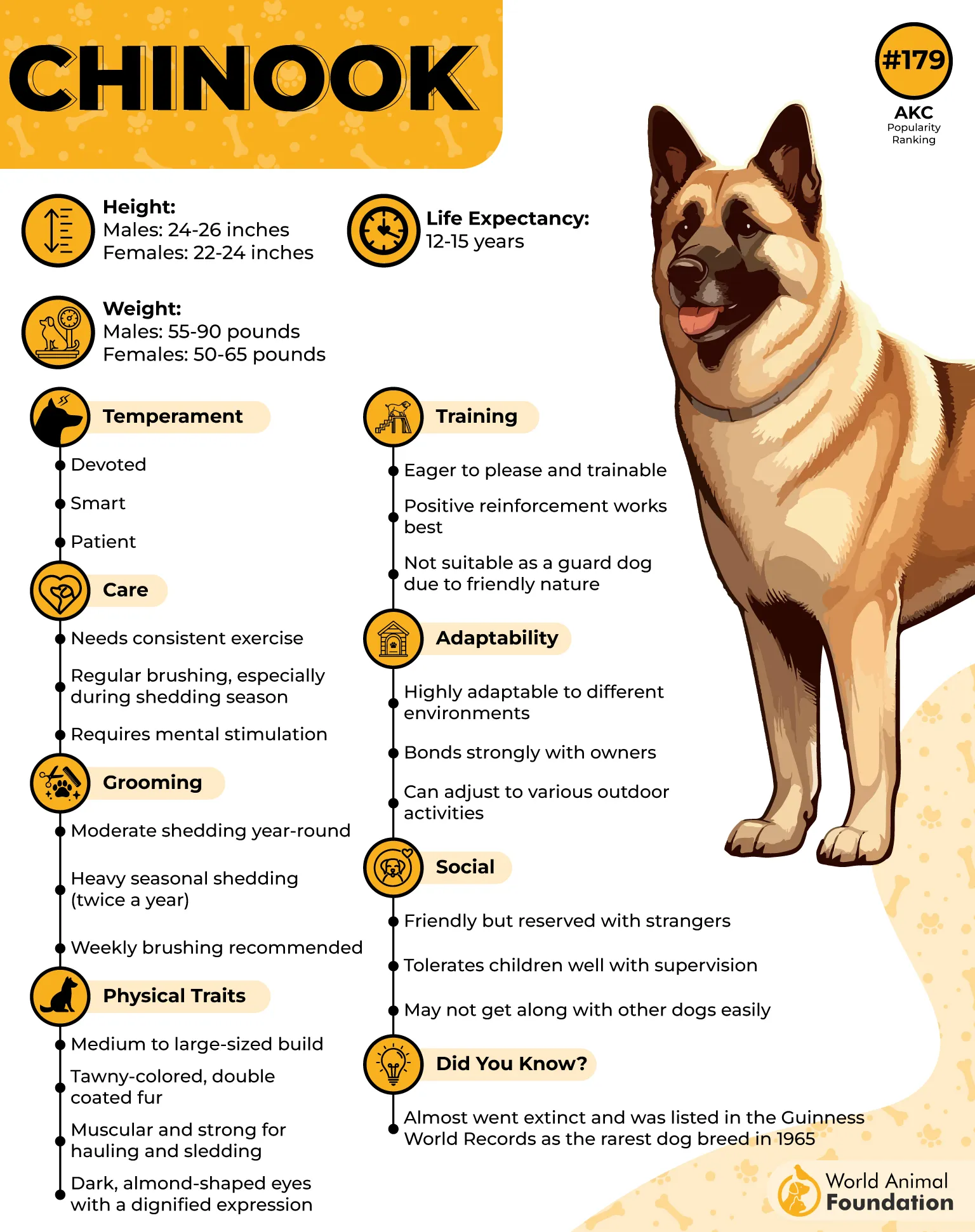
Historical Significance and Recognition
The Chinook became the official state dog of New Hampshire in 2009 due to its deep local roots, as per WebMD. The breed began with one dog named Chinook, known for leading Arctic supply runs. Today’s population still descends from that single bloodline.
Rare Presence in Modern Circles
Though once used as sled dogs, they’re now among the most overlooked rare dog breeds in North America. Limited breeding programs keep their numbers small but stable. Their quiet strength and consistent personality set them apart from more common working breeds.
2. Peruvian Inca Orchid
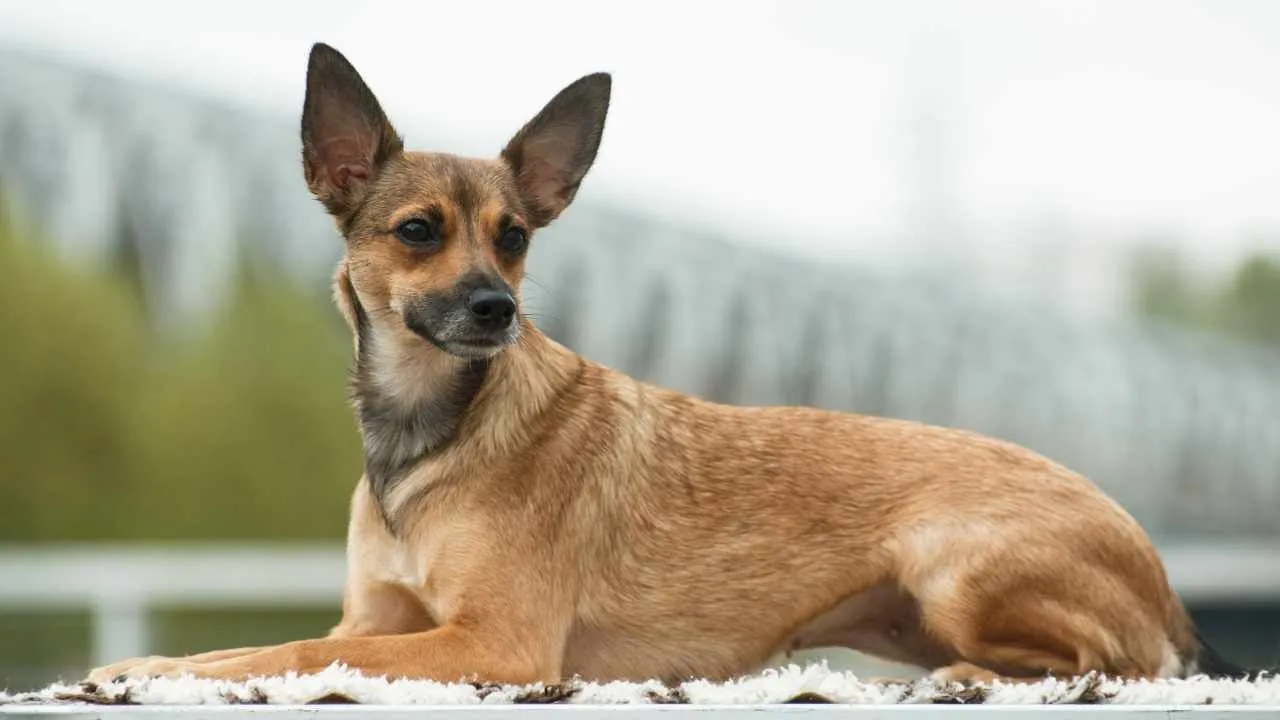
This breed dates back to pre-Incan civilizations and has been found in ancient Peruvian pottery and tombs. Their skin lacks fur in most varieties, giving them a warm surface and minimal shedding. Their hairless appearance is natural, not a result of grooming or hybrid breeding.
Personality with Strong Sensory Awareness
They are alert and deeply attuned to their surroundings, showing quick recognition of sound and scent. Owners describe them as sensitive to mood changes and responsive without being reactive. Their bond with humans is steady and often reserved for family members.
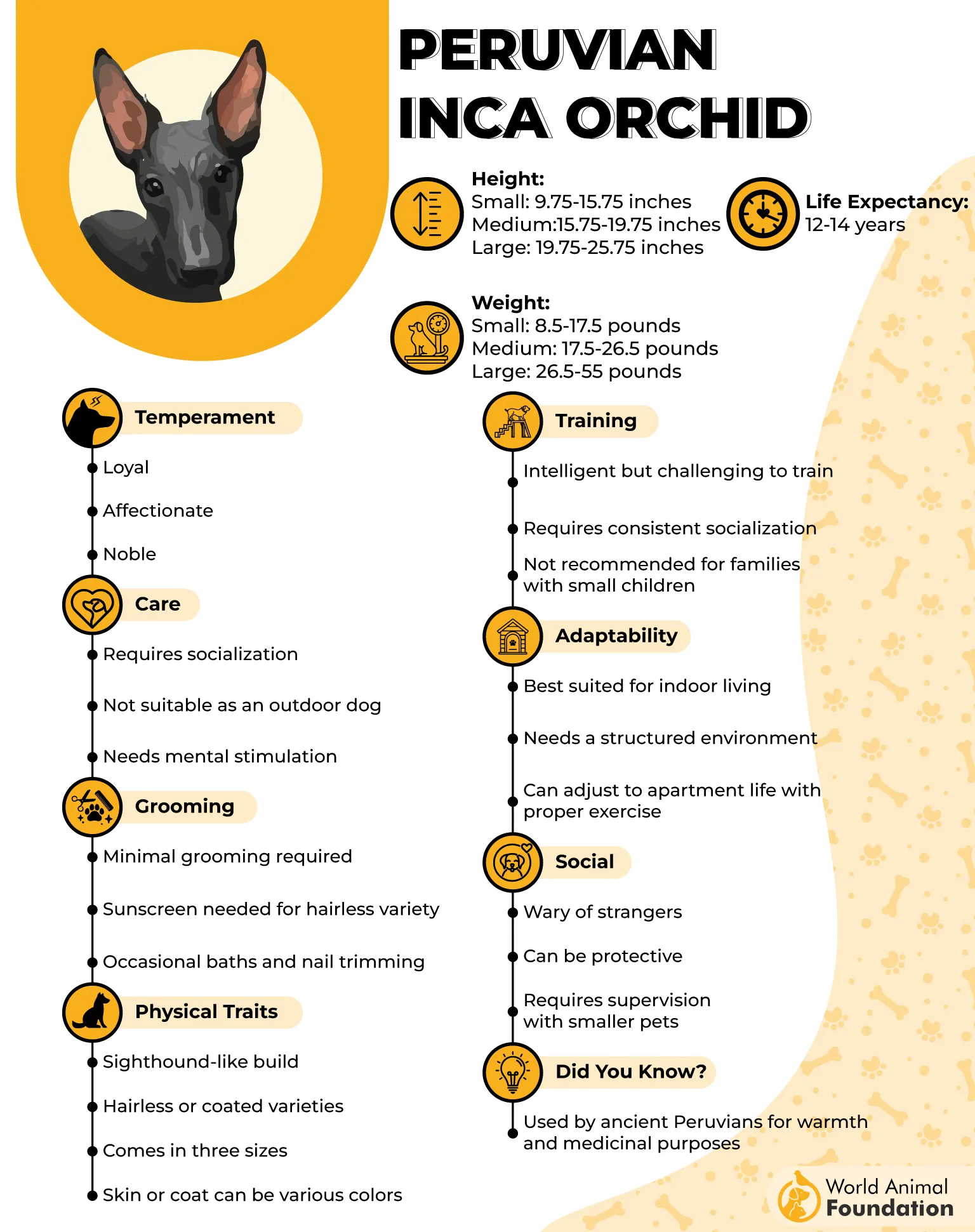
Body Suited for Agility and Speed
Long limbs, tucked waists, and flexible joints allow them to sprint quickly in short bursts. Their movement is quiet, swift, and balanced — even indoors. Historically, they’ve been used as hunting dogs in rural regions of Peru.
Among the Most Underrated Companions
The Peruvian Inca Orchid remains one of the lesser-known rare breeds, often unfamiliar outside South America. Still, they rank among the most intelligent dogs in native registries. Their ability to learn routines and adapt to quiet households makes them a valuable but under-recognized breed.
3. Norwegian Lundehund
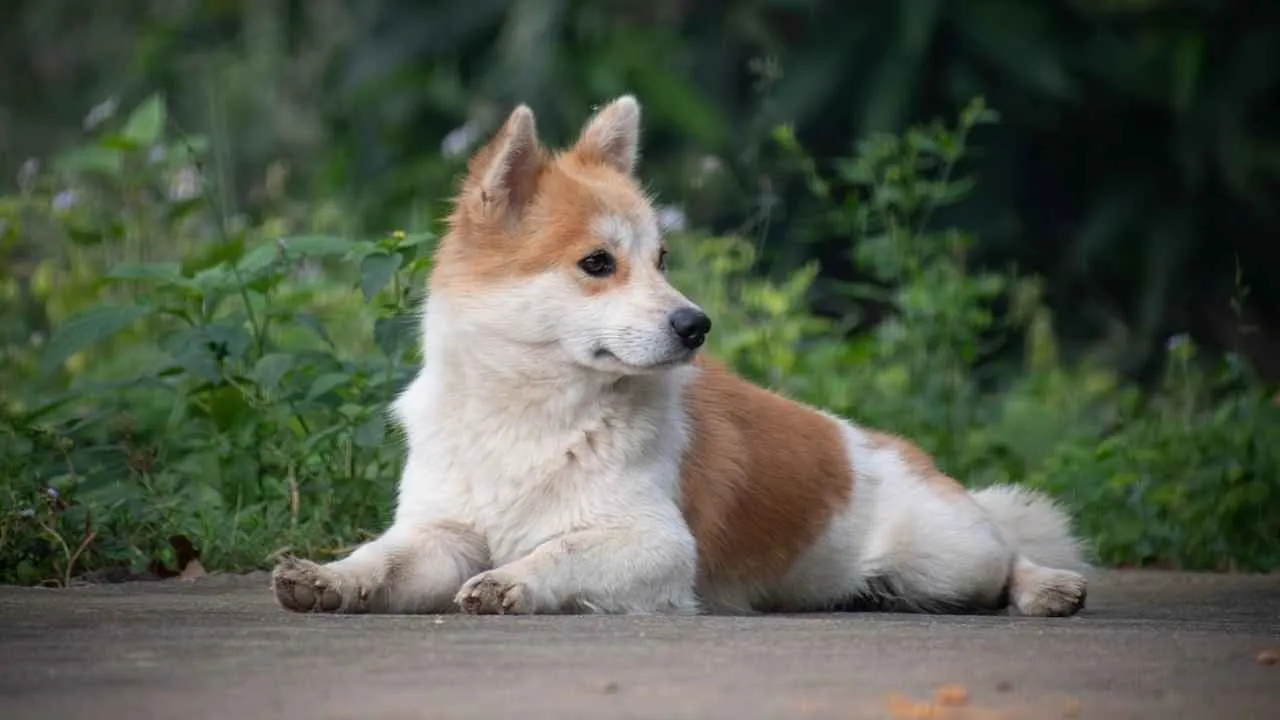
The Lundehund has six fully developed toes on each foot, which improves grip on rocky terrain, as mentioned in PetMD. Their joints allow extreme flexibility, including neck extension backward over the spine. These traits were once vital for climbing narrow cliffs along Norway’s coast.
Hunting History That Shaped Behavior
This breed was used to retrieve puffins from steep crevices, working silently and with precision. Their independent nature comes from generations of solo cliff work without handler guidance. That instinct still influences their alert and sometimes cautious behavior indoors.
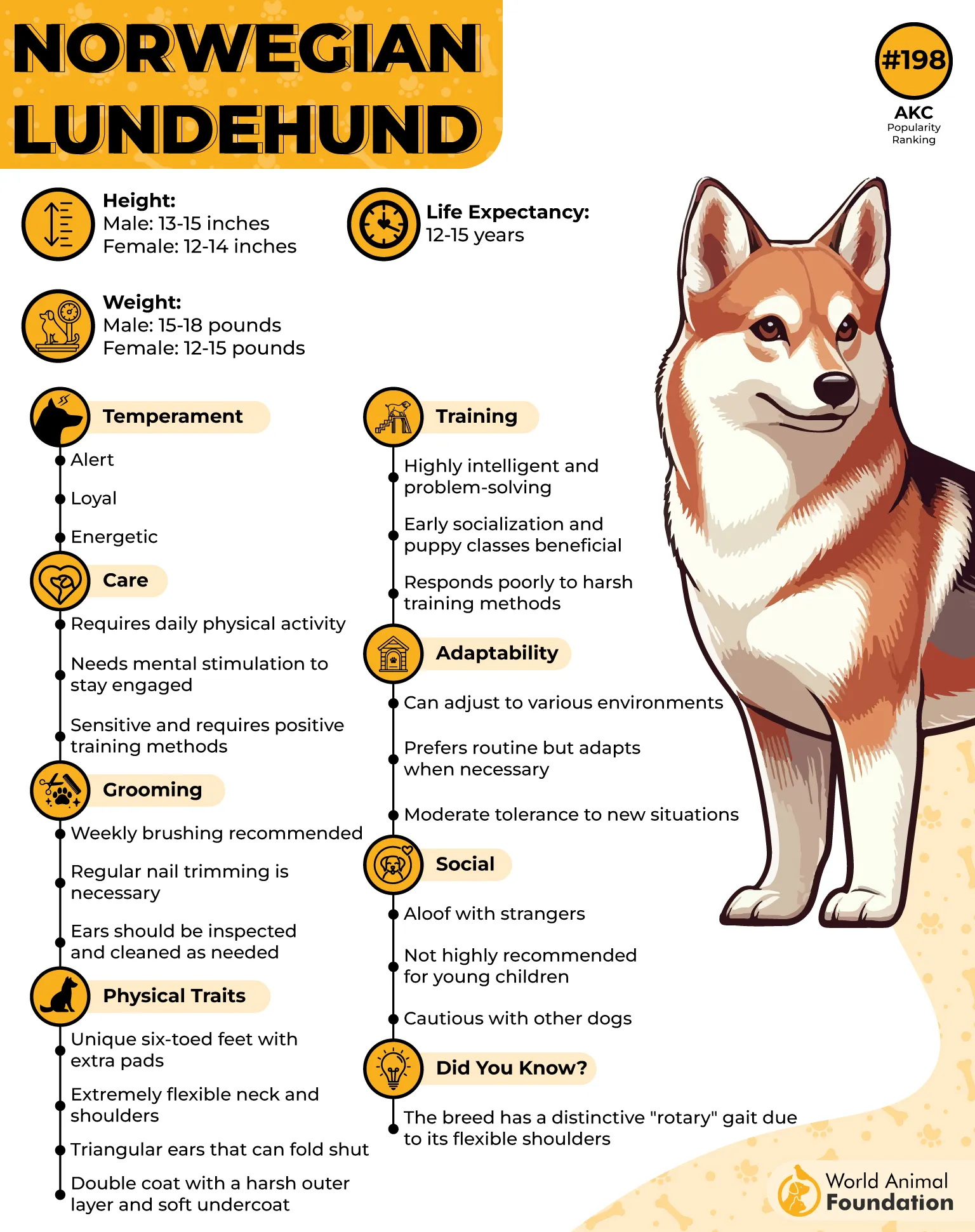
Daily Activity Keeps Them Engaged
They’re considered energetic dogs and do best when mentally and physically active. Without enough stimulation, they may develop repetitive or obsessive habits. Interactive games, agility drills, and changes in routine help maintain balance.
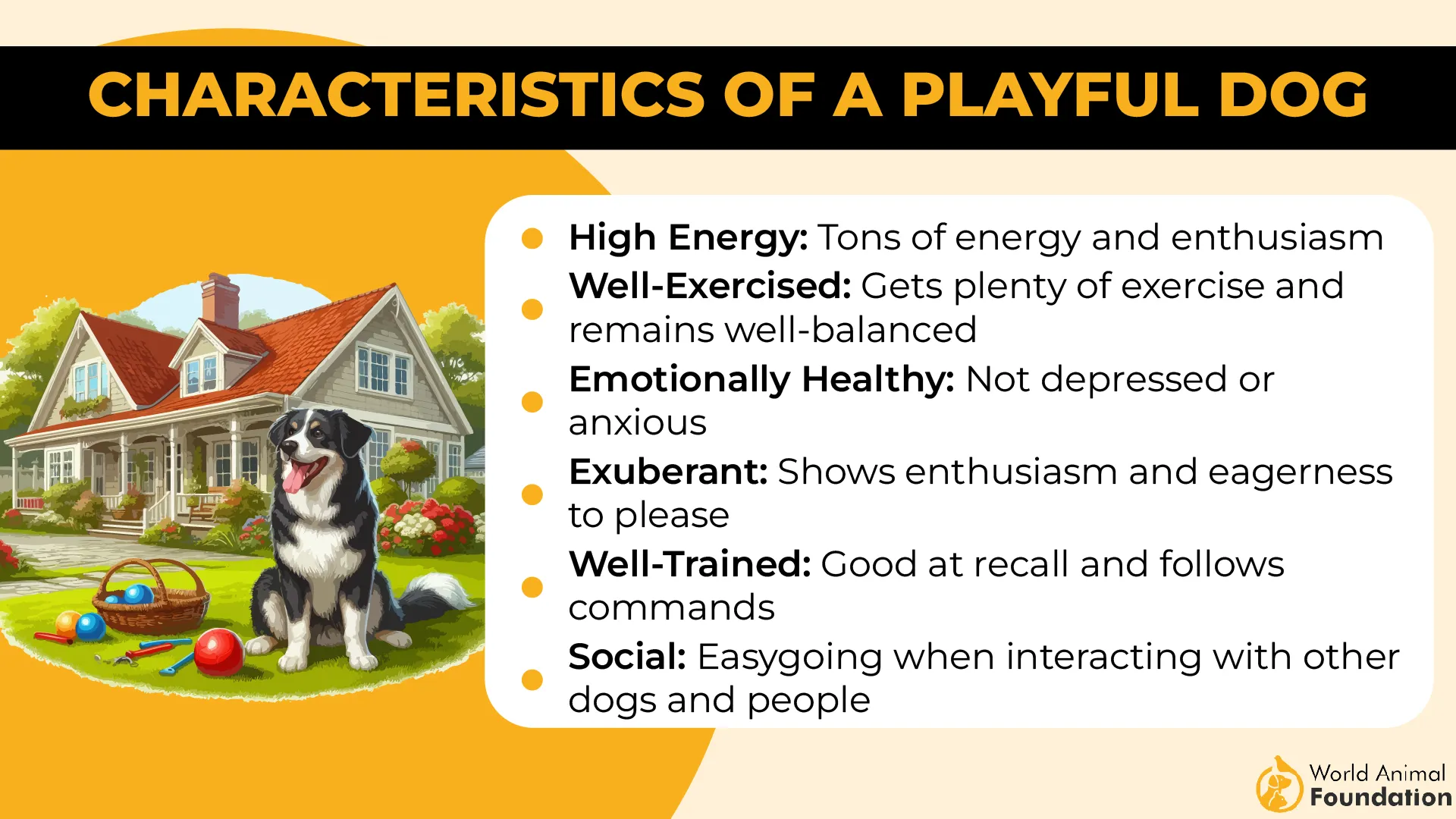
A Compact Yet Capable Athlete
Weighing under 16 pounds, the Lundehund surprises many with its stamina and control on difficult surfaces. It’s an athletic dog with traits suited for uneven terrain, not just flat ground. Their agility is a direct result of evolutionary adaptations, not just training.
4. Otterhound
The Otterhound is known for its powerful scenting ability and rough, water-resistant double coat. Its large, webbed feet help it move easily through rivers and muddy banks. These traits were key to its work in aquatic tracking for centuries.
Sturdy Build with a Loose Gait
Its body is deep-chested, with strong bones and a long, slightly arched neck. The movement is springy and long-reaching, developed for endurance over wet and uneven ground. This gait is part of what allows them to cover distance without quick fatigue.
Personality Suited for Space and Freedom
They are friendly, vocal, and tend to be independent thinkers with a strong hound nature. Early training and socialization help them adapt better to home environments. As a loyal dog, they form strong bonds with their families and even with other dog companions.
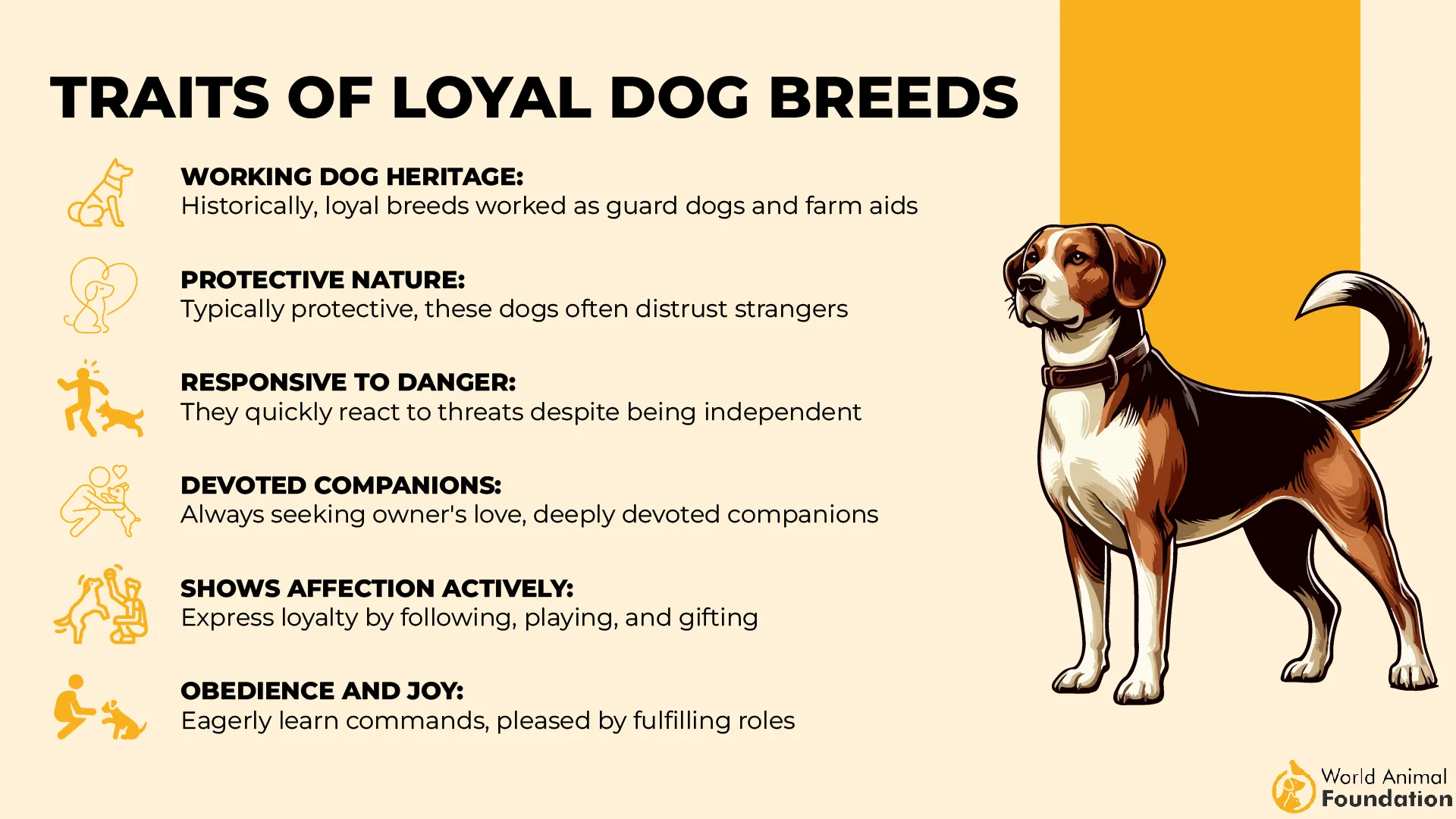
One of the Rarest British Breeds
The Otterhound is now considered one of the UK’s most vulnerable native breeds, as Petplan claims. They were originally bred in England to trail and catch otters in rivers, a task banned in the 1970s. Preservation efforts continue, but their global population remains very low.
5. Finnish Spitz
The Finnish Spitz was developed to alert hunters by using a distinctive, repetitive bark. They were trained to point game birds by barking in rhythm, drawing attention without startling prey. Their voice control and sound pattern earned them the nickname “barking bird dog” in Finland.
Fox-Like Appearance and Movement
They have a pointed muzzle, upright triangular ears, and a curled tail that sits high. Their stride is quick and light, often described as a trot that seems effortless. These features give them an appearance that closely resembles a wild fox.
Loyalty without Overdependence
This breed forms strong bonds but often prefers sitting nearby rather than constantly seeking touch. They stay observant indoors, often moving to higher spots to watch their surroundings. Independent thinking is part of their behavior, especially in environments with routine noise.
National Heritage and Cultural Role
The Finnish Spitz is the national dog of Finland, officially recognized in the 1970s. Local traditions still value its vocal hunting method, especially in rural regions. Its presence in native literature and stamps reflects its cultural significance beyond working ability.
6. Belgian Laekenois
This breed is distinguished by its wiry, tousled coat, built for withstanding harsh conditions without shedding heavily. The texture protects against rain and cold while keeping the body temperature regulated. Its faded fawn coloring with black-tipped hairs gives it a rugged and alert look.
A Working Dog with Close Roots
The Belgian Laekenois is one of four Belgian herding breeds, all developed around the same time for livestock work. It was commonly used to guard linen drying fields in the Laeken region. Their protective instincts trace back to practical, territory-based roles in the Belgian countryside.
Temperament Shaped by Purpose
They are intelligent, focused, and naturally form tight bonds with familiar people. While not overly social with strangers, they show deep loyalty to those they trust. Early training helps shape their mental sharpness into manageable, confident behavior.
Breed Recognition Came Late
Although long known in Europe, the Laekenois gained full AKC recognition in 2020. For years, it was overshadowed by its better-known cousins — the Malinois, Tervuren, and Groenendael. Its lower numbers have contributed to its rare visibility in international circles.
7. Cesky Terrier
The Cesky Terrier was developed in the mid-20th century in Czechoslovakia by geneticist František Horák. It was bred by crossing the Sealyham and Scottish Terriers for controlled hunting in dense forests. The body shape is longer and lower to the ground, making it easier to navigate burrows.
Distinctive Coat and Grooming
Their silky coat is soft with a slight wave and doesn’t shed heavily like some terriers. Cesky Terriers require regular trimming with a clipper rather than hand stripping. Their grooming routine is precise, with defined lines along the head, body, and legs.
Mild Temperament Among Terriers
They are more laid-back than most terriers, often described as calm, polite, and emotionally steady. Cesky Terriers show devotion without high-intensity energy or restlessness. Their trainability improves with routines that favor structure and soft reinforcement.
Rarity with a Defined Identity
This is one of the few terrier breeds with a controlled, standardized development from the start. Their population remains small globally but is closely tracked by breeders. Recognition by the American Kennel Club came in 2011, making them officially accepted in the Terrier Group.
Conclusion
There are millions of dog owners in the U.S. alone, but few have explored beyond the familiar names. These rare dog breeds come from different corners of the world, each shaped by need, purpose, and geography.
Whether bred to hunt otters, guard linen fields, or work as an all-purpose sled dog, these dogs carry deep meaning in their form and behavior. Some are big dogs, others are compact, small dogs, but all bring unique characteristics to the table.
These aren’t just curiosities—they’re companions with a rich heritage. While most dogs are loved for familiarity, these unusual breeds offer something else entirely: the chance to live with a story.


